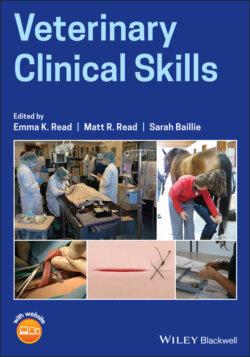Читать книгу Veterinary Clinical Skills - Группа авторов - Страница 13
Introduction
ОглавлениеThe goal of veterinary curricula is to educate students to be optimally prepared to enter the veterinary profession with entry‐level medical knowledge and appropriate mastery of an array of clinical skills (Read and Hecker, 2013; Dilly et al., 2017; Thomson et al., 2019; Duijn et al., 2020). Not only will the qualified veterinary professional be expected to display knowledge and mastery of skills, but he or she will also have to function as part of the veterinary team, working with veterinary nursing professionals where both the veterinarian and veterinary nurse (or “vet tech”) have input into patient care and treatment (Kinnison et al., 2011). Good veterinary interprofessional practice may have benefits for the practice, the individual team members, the client, and the patient (Kinnison et al., 2014). It can, and should, be argued that this relationship between members of the professional team should be nurtured and developed from an early stage, ideally at the level of educating students. While published studies in interprofessional education interventions are sparse, it must be acknowledged that at teaching institutions where the two groups of students are educated together, opportunities for integrated curriculum design are ample and should be fostered. Even if these opportunities do not exist because of physical separation of teaching facilities, it must be kept in mind that there are many more similarities in designing clinical skills curriculum for veterinary and veterinary nursing/veterinary technology students, than there are differences. This chapter will discuss processes in the design of clinical curricula that are similar for veterinary and veterinary nursing (or veterinary technology, as called in Australia and United States) students.
The veterinary degree, perhaps more than any of the other health science degrees, poses a challenge to curricular design due to the breadth of material that must be covered, expectations of the level of competence at graduation, and the variety of career options available to veterinarians. By recognizing the close correlation between the veterinary knowledge and clinical skills also expected of newly qualified veterinary nursing professionals, it follows that near‐similar challenges are posed to the design of curricula for veterinary nurses.
Despite its importance, it is easy to slip into a pattern of ad hoc curricular development with little attention to desired outcomes (Schneiderhan et al., 2018). Therefore, contemporary veterinary curricula must refocus on the fundamental knowledge, skills and behaviors required of graduates and utilize modern methods grounded in educational theory to best achieve these (Hodgson and Ilkiw, 2017).
In the broadest sense, a curriculum is defined as the totality of student experiences that occur in the educational process (Wiles, 2009), but any planned educational experience is also considered to be an example of a curriculum (Kern et al., 2016) with this latter definition being applicable for a section of a veterinary curriculum focused on clinical skills development. Although a clinical skills curriculum would not be the totality of veterinary training, the same principles of curricular design should be adhered to when developing, or evaluating, a clinical skills curriculum for veterinarians and veterinary nurses.
There are several fundamental tenets when approaching curricular design that have been well articulated by Kern (2016): “First, educational programs have aims or goals, whether or not they are clearly articulated. Second, medical educators have a professional and ethical obligation to meet the needs of their learners, patients and society. Third, medical educators should be held accountable for the outcomes of their interventions. And fourth, a logical, systematic approach to curricular development will help achieve these ends.”
To help achieve the last of these principles, Kern developed a six‐step model for curricular development in medical education (Kern et al., 2016) (see Figure 2.1). This model will be used as a framework for this chapter as all the steps are equally relevant to a veterinary clinical skills curriculum, for both veterinary and veterinary nursing students, with some modifications for the different educational contexts. Further, these principles of curricular design are fundamental, yet flexible enough to yield different types of curricula in different hands, depending on the local environment and the available resources in which the clinical skills curriculum is developed.
